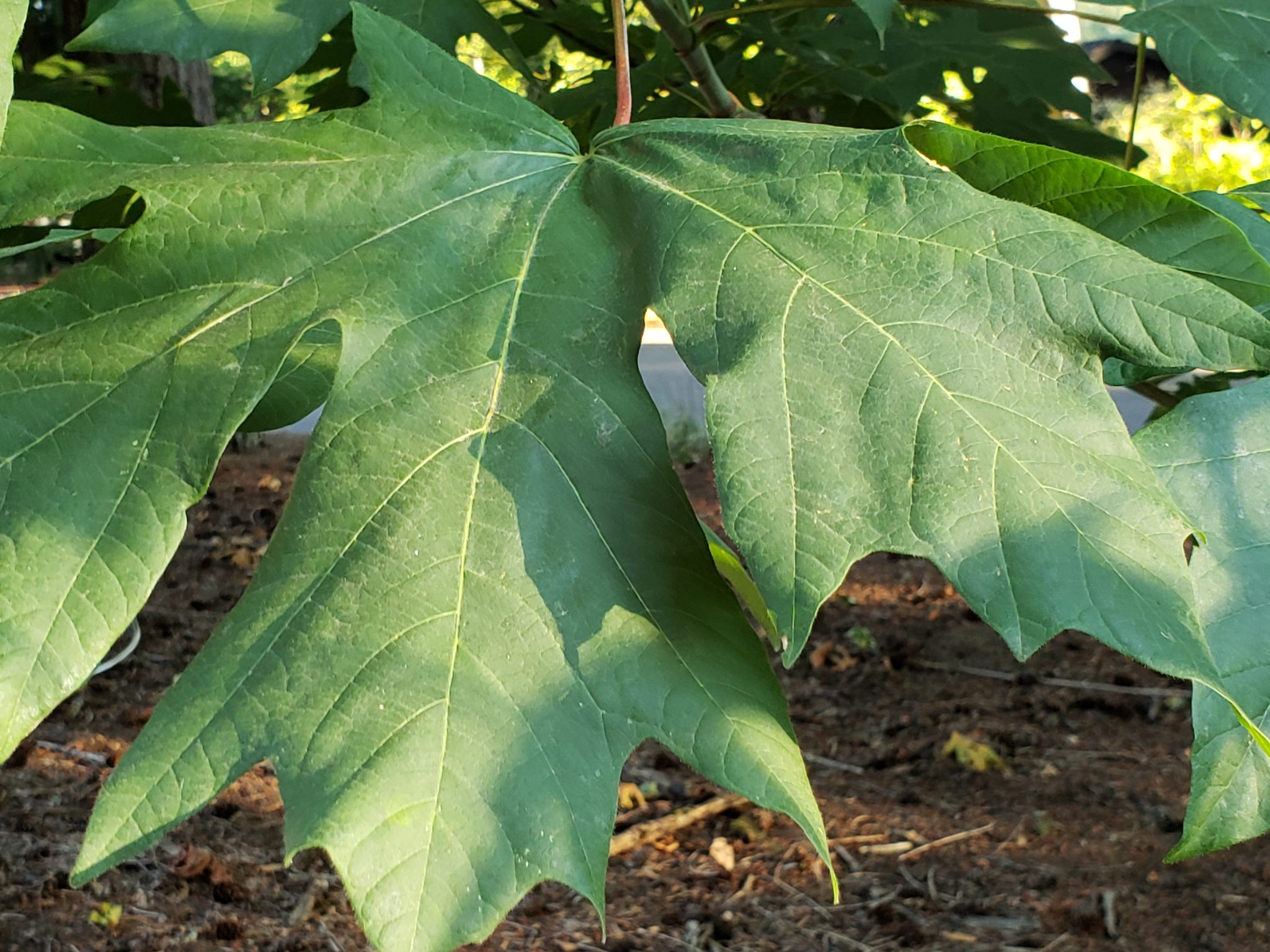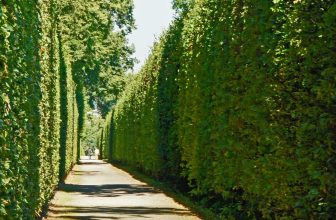
The importance of the humble leaf to life on Earth cannot be overstated. The chemical conversion of sunlight energy into carbohydrates occurs inside the leaf and is the basis for most ecosystems in the world, including our own.

Leaf Structure
The process of converting sunlight energy, carbon dioxide, and water into carbohydrates and oxygen is called photosynthesis. The leaf structure gathers these ingredients necessary for photosynthesis to occur. Leaves are situated high in the tree canopy to maximize sunlight energy absorption. Water in the soil is absorbed by the tree’s roots and is drawn up to the leaves through the xylem. The water travels from the xylem, through the leaf stem, to the veins within each leaf blade.

Each vein is only a few cells apart within the leaf blade. The intricate vein structure can be seen in the decayed magnolia leaf above. Carbon dioxide is absorbed from the air through the tiny pores, called stomata, on the underside of the leaf.

A cross section of a leaf blade reveals a layered structure with different processes occurring in each layer. The layers of epidermis on the top and bottom of the leaf blade have a cuticle layer to prevent dehydration. The cuticle layer can have a waxy cutin layer or mats of tiny hair-like fuzz that prevent water loss. The mat of fuzz can be seen on the bottom of the sycamore leaf above.

The stomata reside in the lower epidermis layer and have guard cells which control the opening and closing of the pores to reduce water loss. Most stomata are not visible with the naked eye, but in some evergreen species, like the western red cedar seen above, the stomata are surrounded by a waxy white coating called a stomatal bloom. The stomata are seen as rows of tiny bumps within these bands.
Photosynthesis
Photosynthesis occurs in the middle layer, or mesophyll, of the leaf in cell structures called chloroplasts. The chloroplasts contain chlorophyll and other light-capturing pigments. The chemistry of photosynthesis is complex, but a simplified version explains photosynthesis in two steps.
The first step is the light reaction, in which the light energy captured by the chloroplasts splits each water molecule (H2O) into two hydrogen atoms and one oxygen atom. Oxygen atoms combine to form oxygen gas (O2) that is released into the atmosphere through the stomata on the underside of the leaf.
In the second step of photosynthesis, called carbon dioxide fixation, the remaining hydrogen atoms from the light reaction combine with absorbed carbon dioxide and intermediary molecules to form several types of simple sugar molecules. These simple sugar molecules can recombine to form larger molecules like sucrose, starch and cellulose. The resulting carbohydrates are distributed throughout the tree beginning in the phloem cells in the leaf blade veins. The tree uses these carbohydrates to grow and store for future energy needs.
Importance of Leaves to Ecosystems
Leaves convert sunlight into carbohydrates. These carbohydrates feed insects, birds, fish, and mammals, including us. The byproduct of photosynthesis is oxygen, which the vast majority of living organisms need for energy production. As photosynthesis is the basis for most ecosystems on earth, and the majority of photosynthesis occurs in leaves, the leaf is essential to our survival. The next time you’re admiring a tree, take a closer look at the leaves in which the miraculous photosynthesis process occurs.








